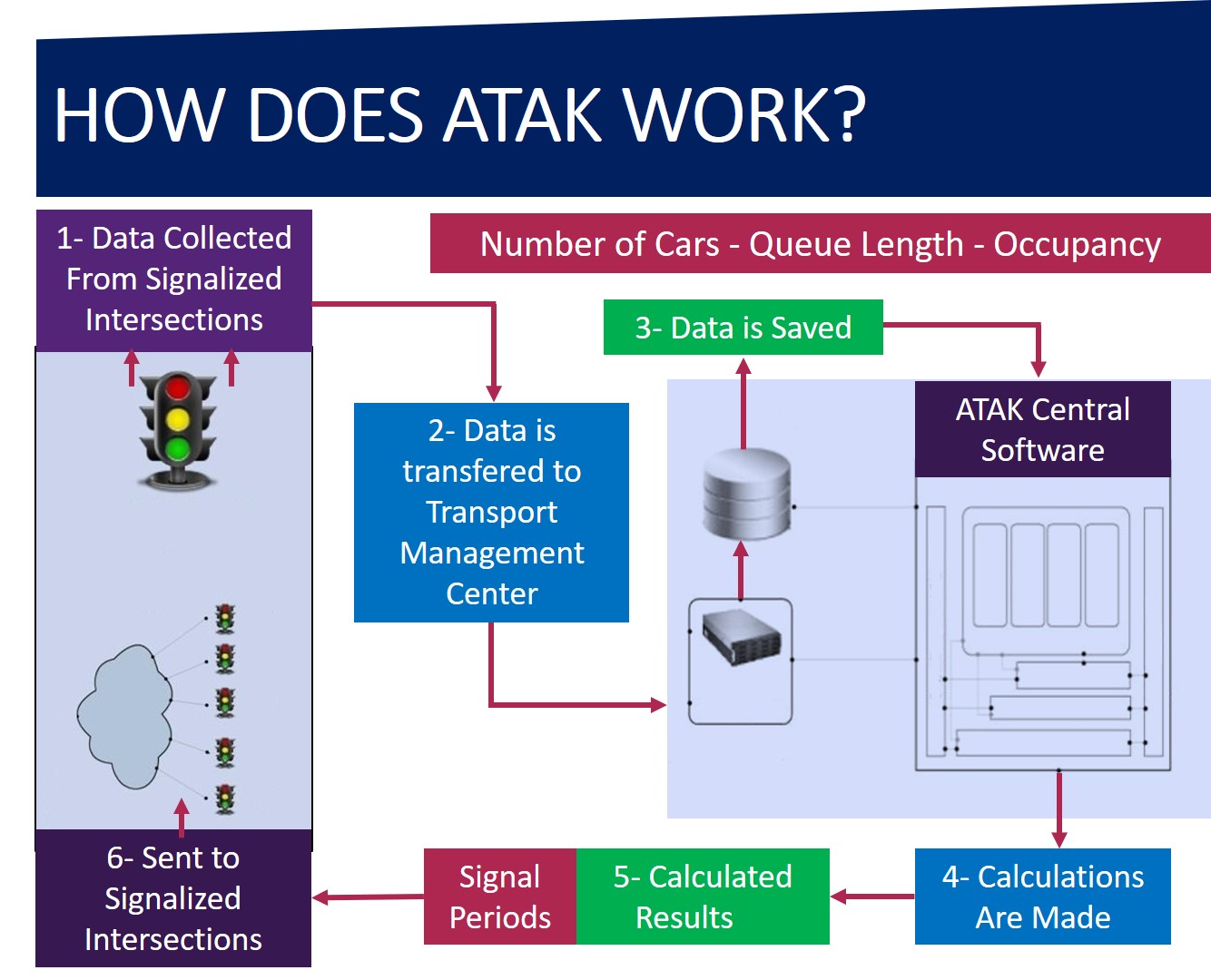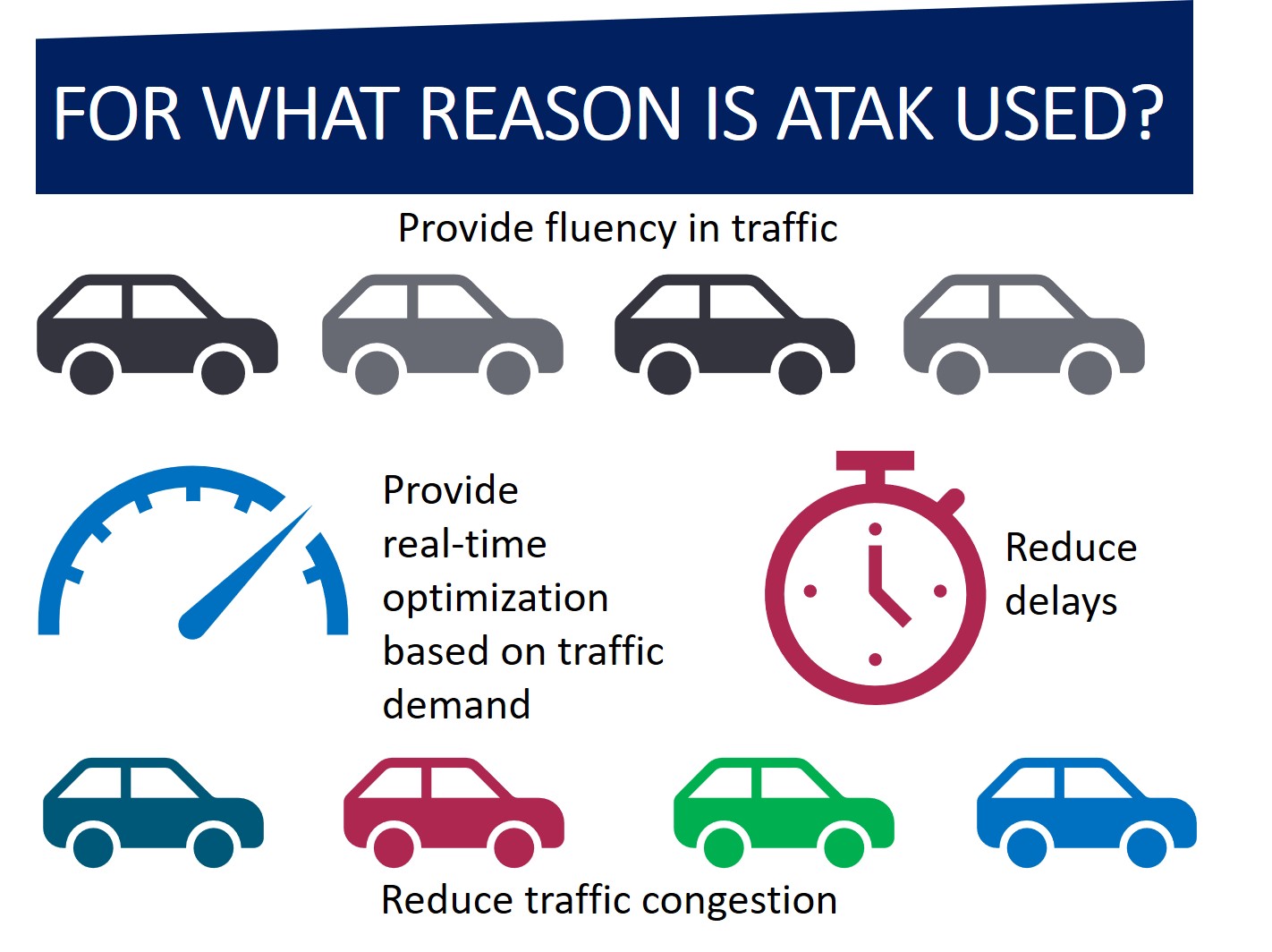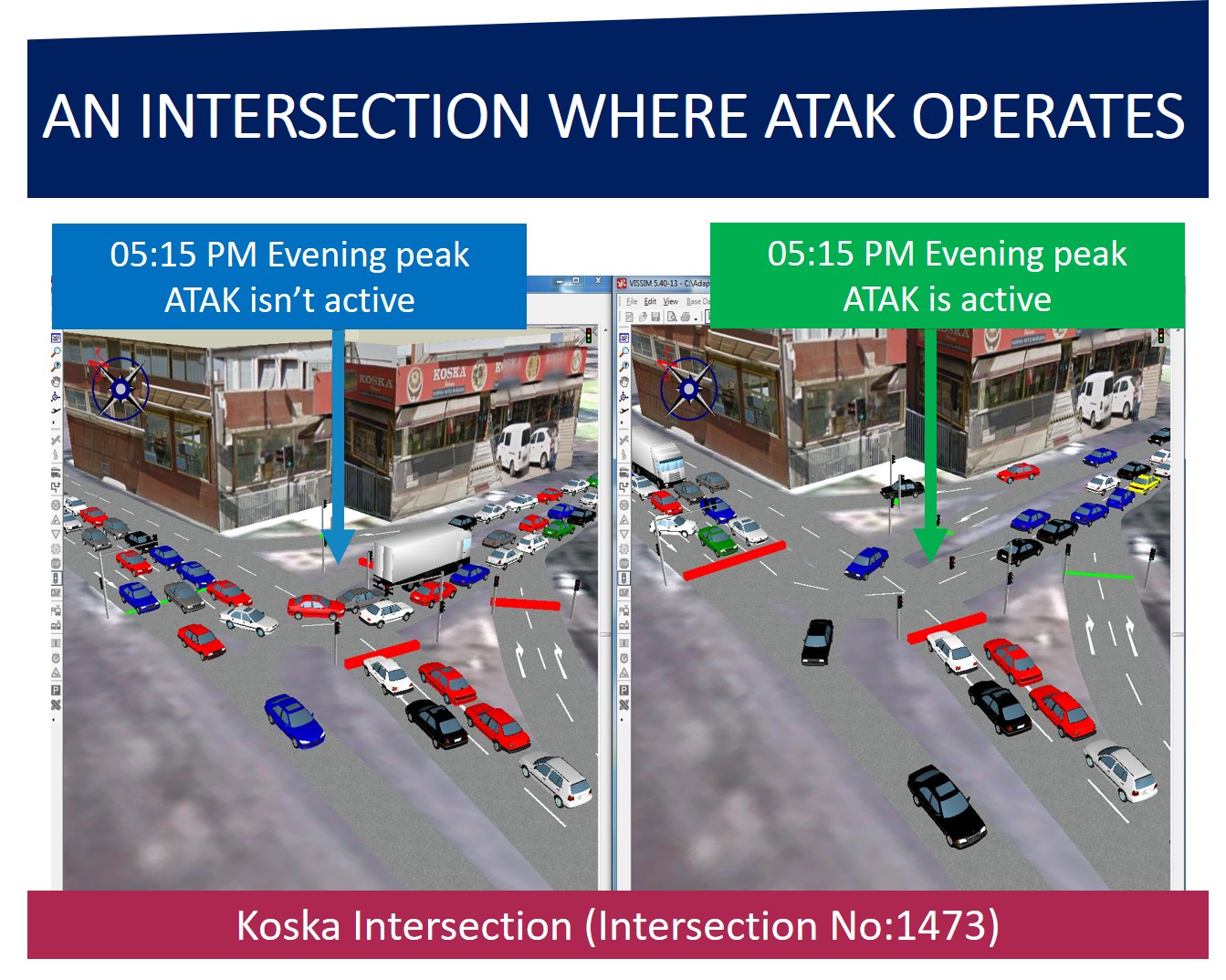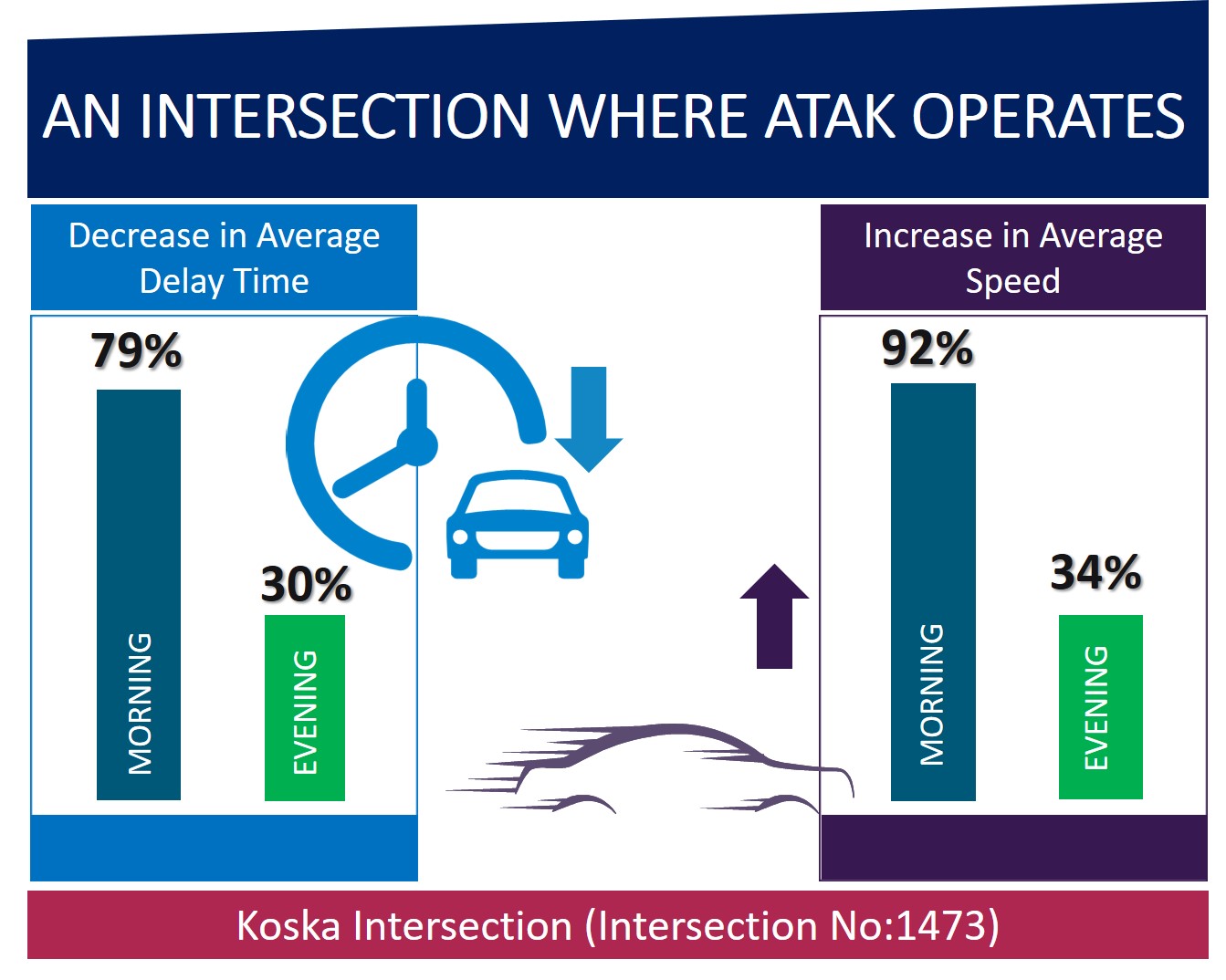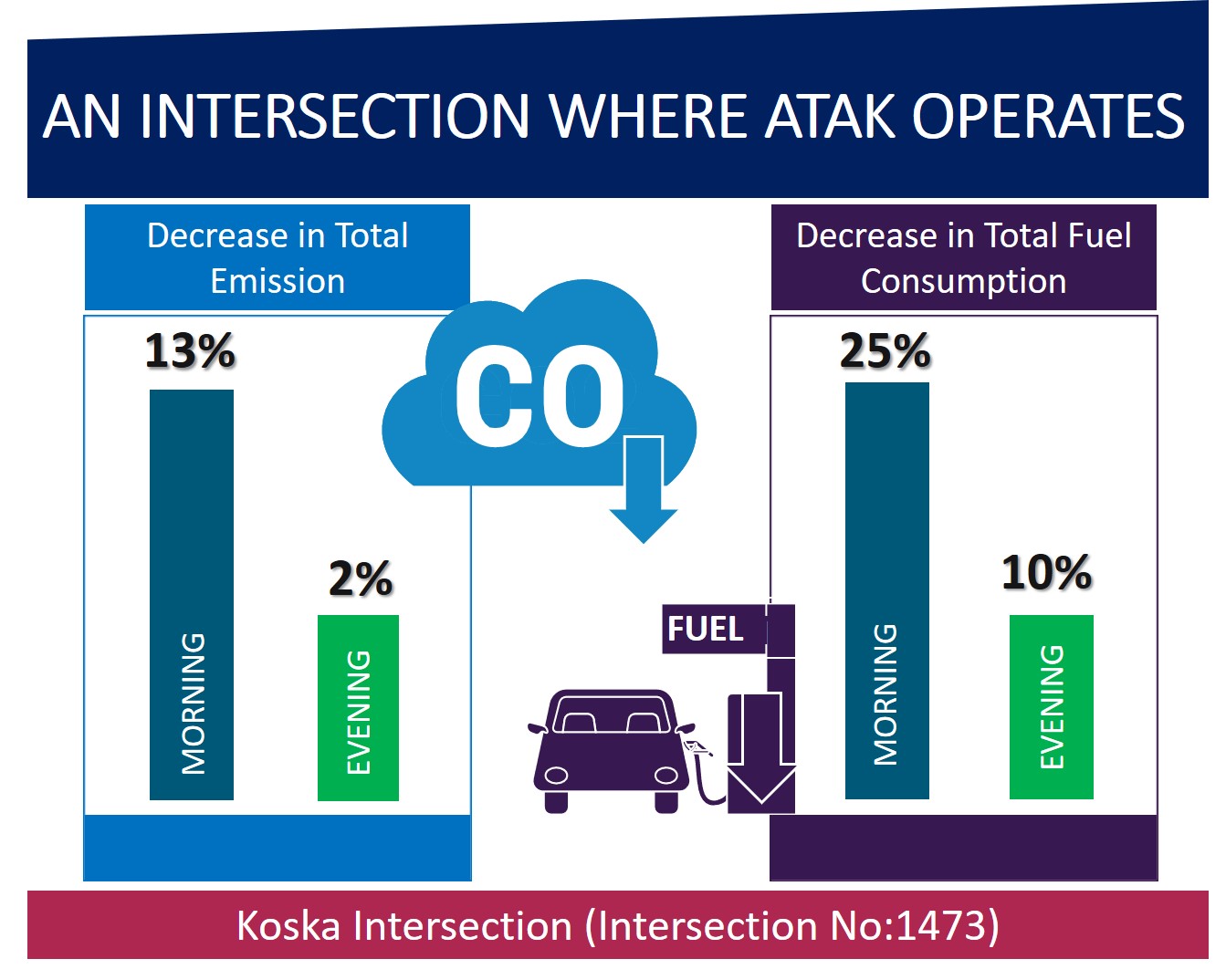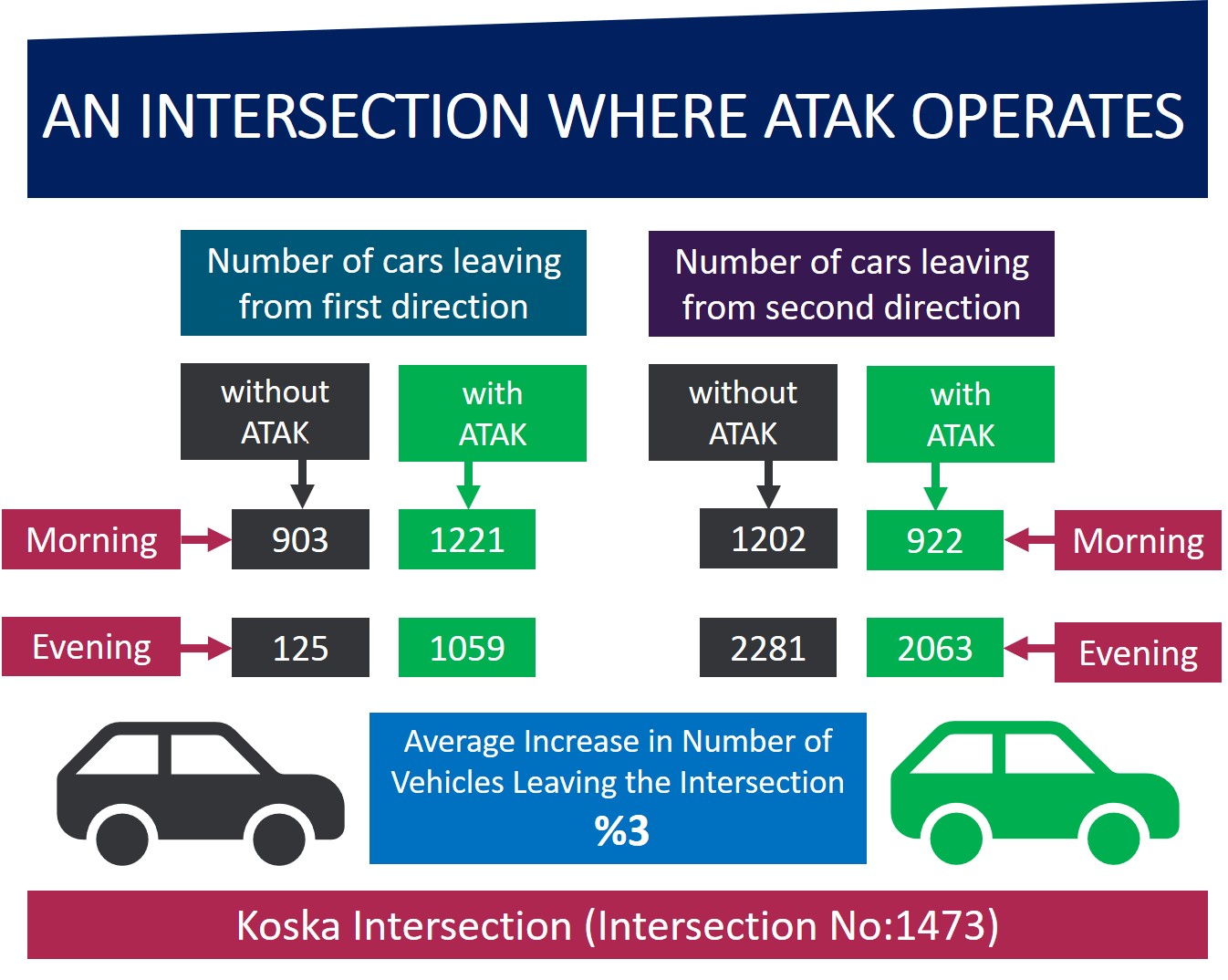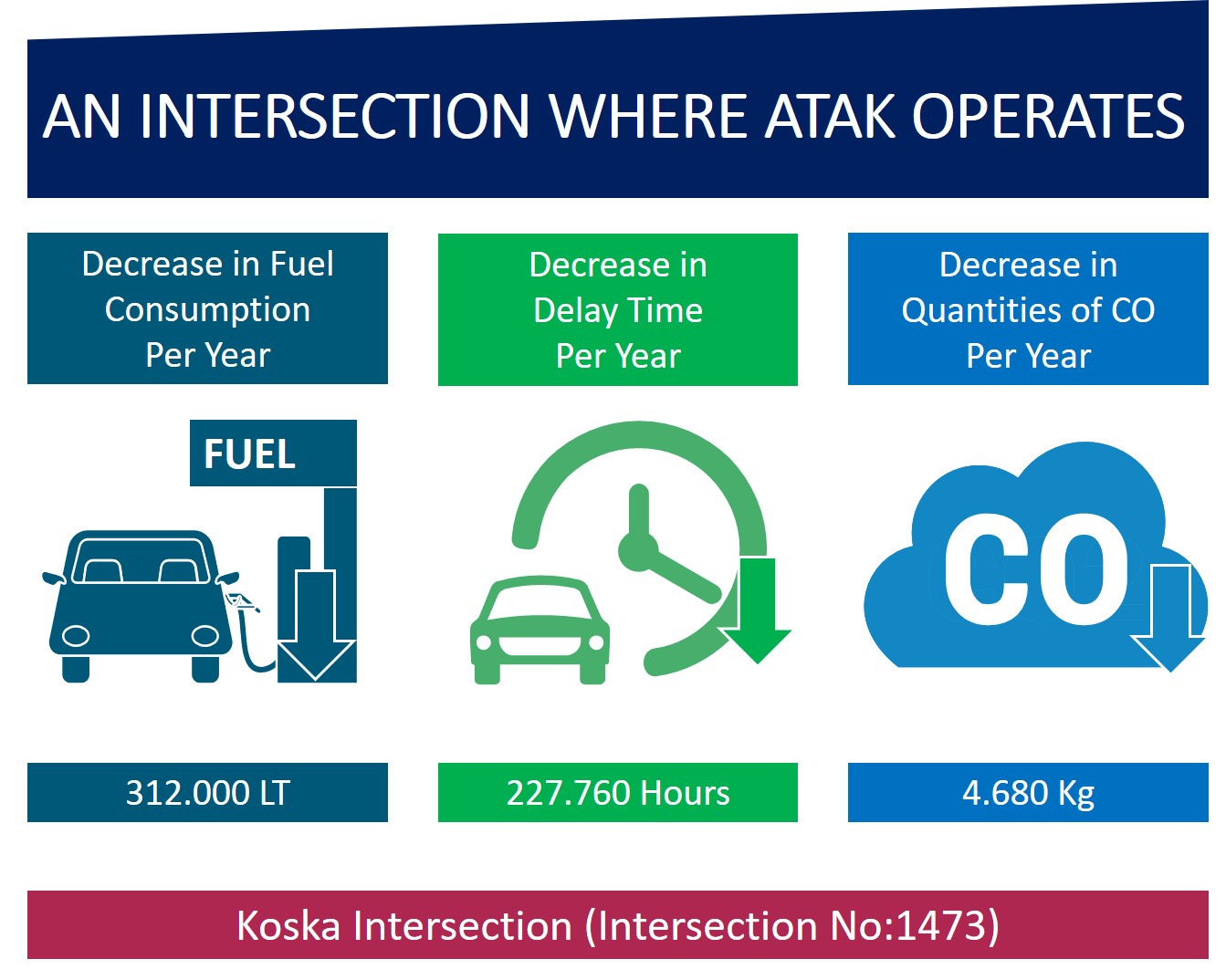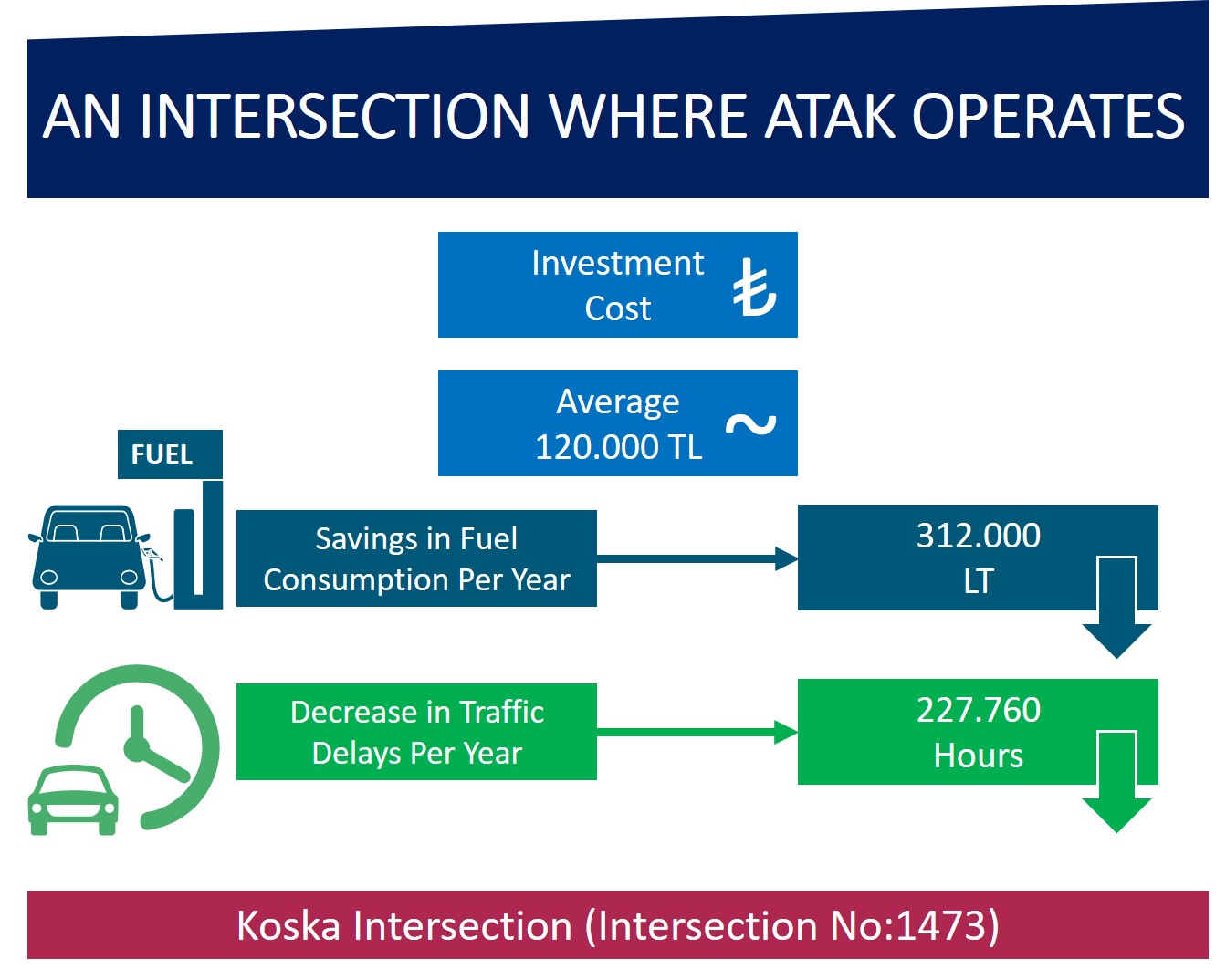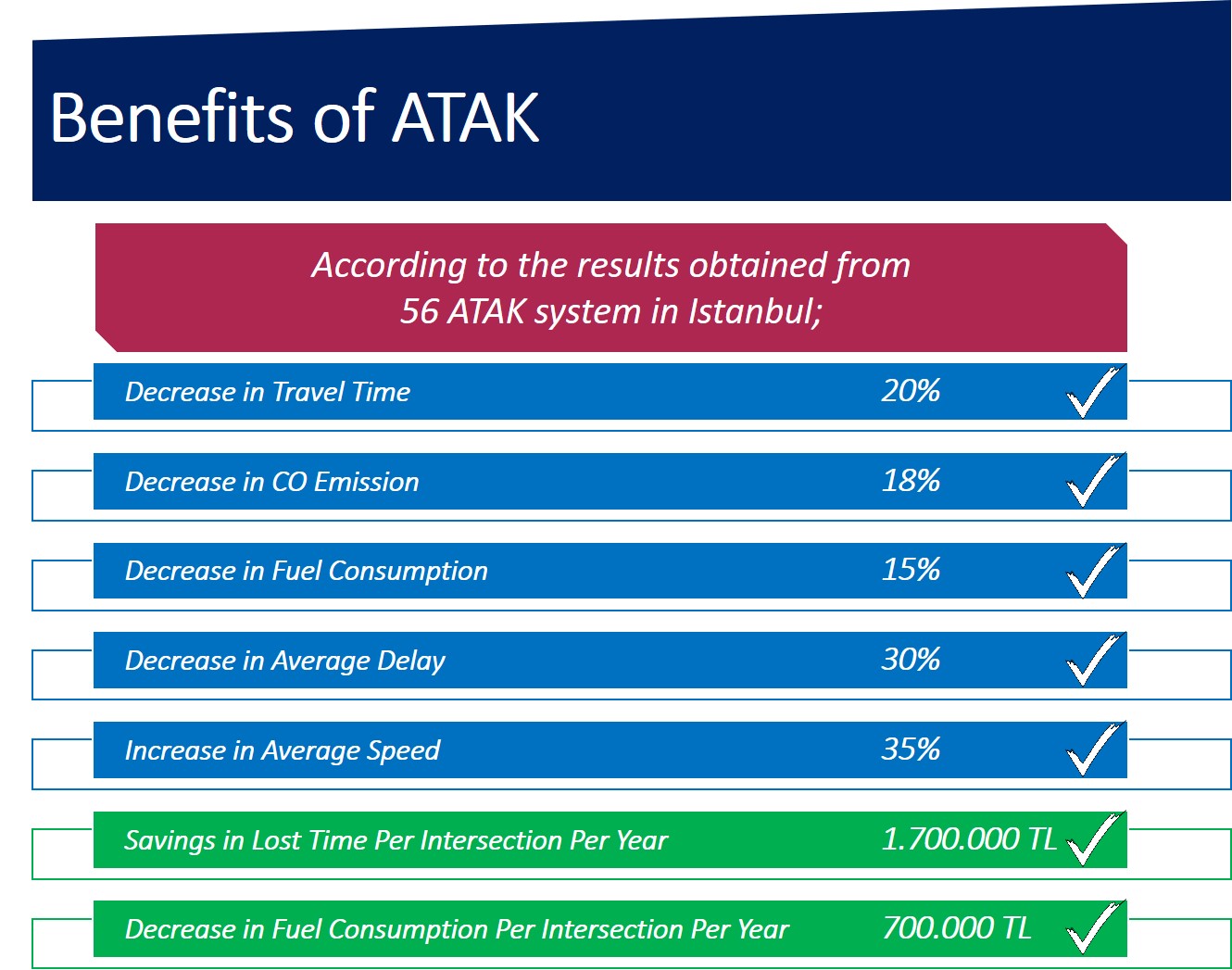09.07.2018
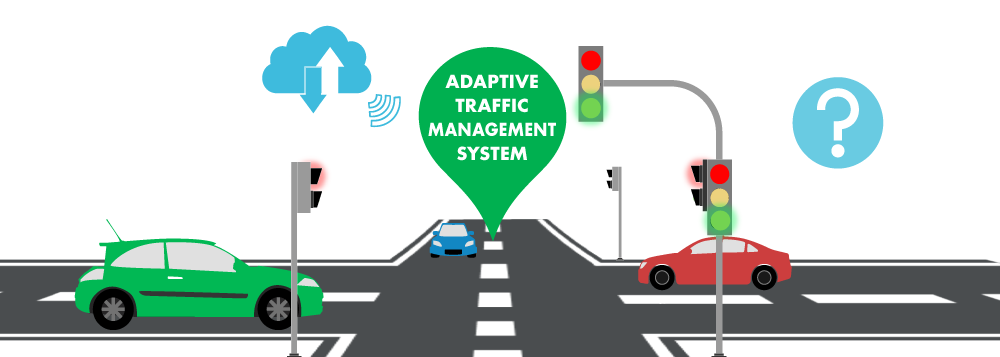
“ATAK” DEPLOYED AT 80 SIGNALIZED INTERSECTİONS
Adaptive Traffic Management System was developed by Istanbul Metropolitan Municipality (IMM) Transport Department to reduce the density of traffic in Istanbul and to increase traffic flow. The system was established at 80 intersections including Ayvansaray, Aksaray Küçük Langa, Edirnekapı Road Maintenance, Baltalimanı Hospital and Ataköy 1st Section signalized intersections. It is planned to increase the number of signalized intersections to 200 where ATAK operates in a short period of time and to deploy it at all intersections of Istanbul.
ATAK WILL BE FULLY DOMESTIC
This system which is widely used in developed countries began to be implemented first and only in Istanbul in Turkey. The software of the Adaptive Traffic Management System was developed by Turkish engineers but the hardware of the system was imported from abroad. IMM started the work to produce the necessary equipment with domestic and national facilities. After the completion of work, a local and national Adaptive Traffic Management System will be established at around 2250 signalized intersections in Istanbul. Thanks to domestic production, cost of equipment which are imported from abroad will be saved by nearly half.
ECONOMIC AND ENVIRONMENTAL SYSTEM
The delay time is decreased by 15 to 30 percent compared to traffic flow data from intersections where ATAK operates. Travel times decreased by 20 percent and traffic flow increased by 35 percent. Along with decrease in time spent in traffic, consumed fuel rate is also decreased by 15 percent. Thanks to Adaptive Traffic Management System, we saved about 700K ₺ fuel per year. An average of 1 billion 700 thousand ₺ time saving was obtained per intersection per year.
HOW DOES ATAK WORK?
Adaptive Traffic Management System provides real-time traffic management according to real-time vehicle density at intersections. Firstly, magnetic sensors located at intersections detect the number of vehicles. This information collected from sensors is sent to traffic signal controller at the intersection. Then, the signal controller sends this information immediately to Adaptive Traffic Management System which runs at Transportation Management Center. System detects density at the intersection. Thanks to its custom algorithm which uses real-time optimization methods while doing calculations, green light periods for each direction of each intersection is determined. As a result, vehicles that cause traffic congestion are removed from heavy traffic areas without waiting or after waiting for a minimum period of time. Traffic flow is accelerated by real-time intervention to traffic flow with Adaptive Traffic Management System.
